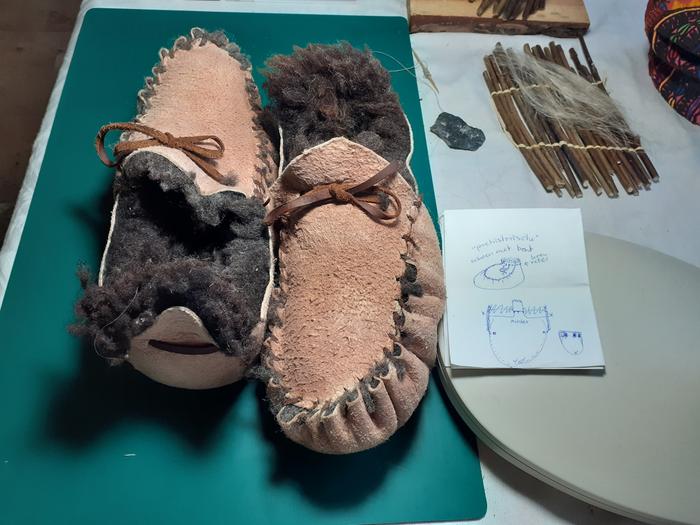
 10
10




When you reach your lowest point, you are open to the greatest change.
-Avatar Aang
 2
2




When you reach your lowest point, you are open to the greatest change.
-Avatar Aang
 6
6




 8
8




All true wealth is biological.
Lois McMaster Bujold
 5
5




If I'm not taking my time, who is?
 5
5




Invasive plants are Earth's way of insisting we notice her medicines. Stephen Herrod Buhner
Everyone learns what works by learning what doesn't work. Stephen Herrod Buhner
 3
3




Zone 6, 45 inches precipitation, hard clay soil




 2
2




Anne Miller wrote:This might help:
When you reach your lowest point, you are open to the greatest change.
-Avatar Aang
 3
3




May Lotito wrote:Foe hand sewing, do you need a special needle? I have made coon hat before and used the strongest needle that came in the regular needle pack. It worked most of the time but had a hard time piercing through the skin behind the neck.
When you reach your lowest point, you are open to the greatest change.
-Avatar Aang
 7
7












 4
4




'What we do now echoes in eternity.' Marcus Aurelius
How Permies Works Dr. Redhawk's Epic Soil Series
 9
9




All true wealth is biological.
Lois McMaster Bujold
 6
6




"The only thing...more expensive than education is ignorance."~Ben Franklin. "We can easily forgive a child who is afraid of the dark; the real tragedy of life is when men are afraid of the light." ~ Plato
 6
6




All true wealth is biological.
Lois McMaster Bujold
 7
7




Zone 6, 45 inches precipitation, hard clay soil




 2
2




May Lotito wrote:General sewing books such as Vouge Sewing usually have chapters about specialty fabrics of leather and fur. The Fabric Sewing Guide by Claire Shaffer also has a chapter on fur with both hand and machine stitching (home sewing machine, not special fur machine).
Here I took a few pictures of the pages.
When you reach your lowest point, you are open to the greatest change.
-Avatar Aang
 5
5




James Landreth wrote:
May Lotito wrote:Foe hand sewing, do you need a special needle? I have made coon hat before and used the strongest needle that came in the regular needle pack. It worked most of the time but had a hard time piercing through the skin behind the neck.
There are needles that are designed for it. They are thicker, and some are sharp, and others not. Sometimes people use an awl to pierce the hide then sew through the holes
 3
3




leila hamaya wrote:
James Landreth wrote:
May Lotito wrote:Foe hand sewing, do you need a special needle? I have made coon hat before and used the strongest needle that came in the regular needle pack. It worked most of the time but had a hard time piercing through the skin behind the neck.
There are needles that are designed for it. They are thicker, and some are sharp, and others not. Sometimes people use an awl to pierce the hide then sew through the holes
yes its enormously helpful to pre make each hole with an awl. you can get faster at it as you go, but you can pre mark them and measure in one step, then make all the hole in another, then actually sew it together. i guess its harder on fur, not sure how you could mark it to see, but possible on the backside? you can just skip the measuring....and go straight to punching out holes in a resonably straight ish line, probably would work ok as fur would sort of fill in any slight measurement and alignment mistakes.
"The only thing...more expensive than education is ignorance."~Ben Franklin. "We can easily forgive a child who is afraid of the dark; the real tragedy of life is when men are afraid of the light." ~ Plato
 5
5




 3
3




May Lotito wrote:Foe hand sewing, do you need a special needle? I have made coon hat before and used the strongest needle that came in the regular needle pack. It worked most of the time but had a hard time piercing through the skin behind the neck.
"Also, just as you want men to do to you, do the same way to them" (Luke 6:31)






 4
4





"Also, just as you want men to do to you, do the same way to them" (Luke 6:31)
 3
3




Zone 6, 45 inches precipitation, hard clay soil




 5
5










 5
5





"Also, just as you want men to do to you, do the same way to them" (Luke 6:31)
 3
3










 2
2




Mavis Randal wrote:That’s amazing! ...!
"Also, just as you want men to do to you, do the same way to them" (Luke 6:31)

|
roses are red, violets are blue. Some poems rhyme and some are a tiny ad:
Rocket Mass Heater Resources Wiki
https://permies.com/w/rmh-resources
|





